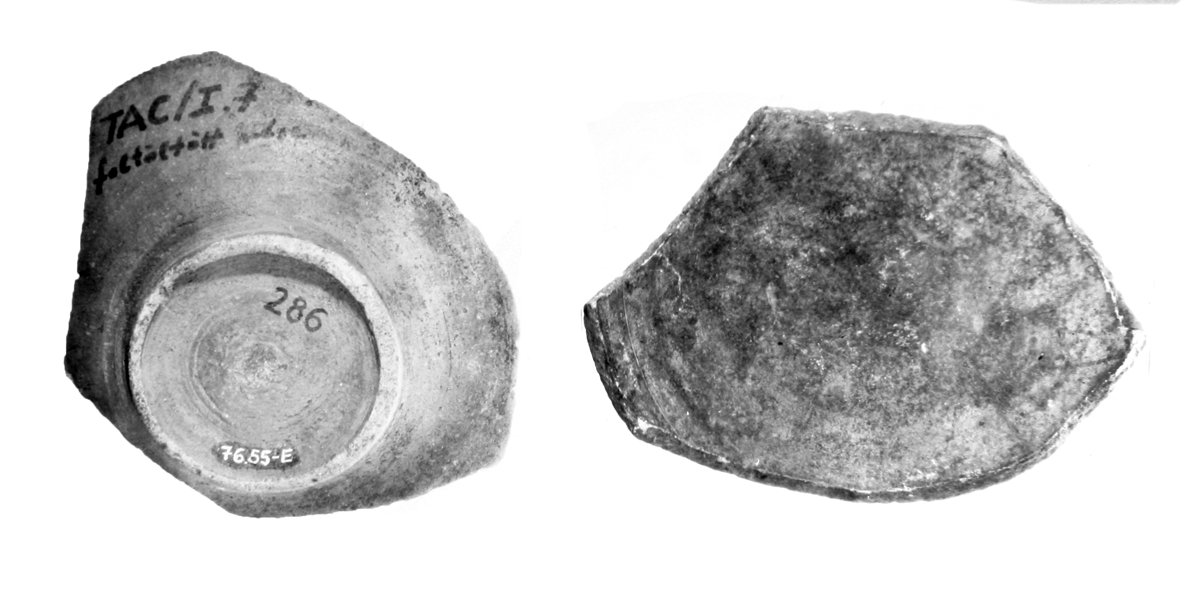
Fragment of a Bowl
Egyptian Art
| Date | 7th-5th centuries B.C |
|---|---|
| Object type | religious or cult object |
| Medium, technique | limestone, carved and painted |
| Dimensions | 6.9 × 2.3 × 1.7 cm |
| Inventory number | 60.33-E |
| Collection | Egyptian Art |
| On view | This artwork is not on display |
The rectangular limestone plaque depicts a frontal nude female standing in a niche of an Egyptian-type shrine in raised relief. The figure is schematically sculpted and characterised by distorted proportions; her legs are closed tightly together and her arms are held close to her body. She wears a short square-cut wig; her breasts and the pubic triangle are highlighted. Finer details, like facial features, are undistinguishable owing to the heavily worn surface and blurred edges. The plaque is rather thick and takes the form of a small shrine. The architecture of the facade was crudely carved by an apparently unskilled hand as indicated by the awkward modelling of the moulding over the lintel. The top of the cavetto cornice is broken off. Both sides of the plaque are decorated with a small-scale image of a shrine; each is cut in half by a horizontal groove. Traces of reddish paint have been preserved on the lintel and on the sides.
Figure plaques of this type in limestone or terracotta first emerged and became widespread in Lower Egypt in the late Saite or Persian Periods but were also produced in large numbers in the early Ptolemaic Period. They vary considerably with regard to size, the shape of the plaque, and the position of the female who, in certain cases, seems to be accompanied by a child or appended by objects of various kinds, such as wine amphorae. Some pieces display even more explicit imagery associated with women, childbirth, and fertility by including lotus or palm columns with Bes or Hathor capitals or a headdress identifying the female figure as Isis-Hathor. It can be argued that they developed from the New Kingdom and the Third Intermediate Period moulded terracotta plaques depicting nude females reclining on a bed, through the reinterpretation of the back slab as a chapel or a shrine. However, beyond the indigenous Egyptian tradition, their iconography also reflects external influences by incorporating features of the Phoenician Astarte plaques or later Greek female figure plaques, suggesting that in a culturally diverse society, nude female figurines might have been used in different contexts for different purposes.
This record is subject to revision due to ongoing research.